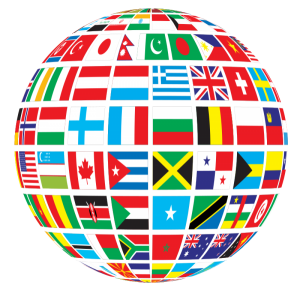By Katie Brown

“We badly need research and development that connects up global change with local change,” social anthropologist and geographer Melissa Leach said during a Feb. 17 session at the American Association for the Advancement of Science (AAAS) annual meeting.
Developing countries in particular are increasingly looking to science to address challenges such as food insecurity, energy pollution, and climate change. As they do, partner nations around the globe often step up to provide financial assistance, research expertise and technological innovations.
But to be effective, those international collaborations must take local contexts into account, producing culturally-relevant research and using approaches that prepare new generations of scientific leaders, the experts said. The aim is to produce sustainable solutions and bolster the research and innovation capacity of people in developing nations. That includes approaches that are bottom-up and community-led.
“It’s about building learning that runs in all directions,” said Leach, director of the Institute of Development Studies at the University of Sussex in the United Kingdom. “We can all learn from each other.”
Science enables global cooperation because it offers citizens, governments and organizations research-based solutions to universal problems. And scientific discovery and technological innovation can reach historically exploited and currently underserved populations, especially in low-income countries disproportionately affected by environmental hazards that can jeopardize human health.
“Science, because of its objective nature … transcends boundaries in really attractive ways,” said Rob Bertram, chief scientist in the U.S. Agency for International Development (USAID) Bureau for Food Security.
Facilitating such boundary crossing involves setting inclusive agendas that equitably emphasize international knowledge and indigenous leadership, said chemist Berhanu Abegaz, former executive director of the African Academy of Sciences and a distinguished visiting professor at the University of Johannesburg.
Young people are seen as a key part of the equation of stabilizing developing nations and increasing their scientific research capacity. Investments in their career growth and development can, in turn, foster growth and development in their countries by building international collaborations and relationships over time.
It can also help bolster research capacity, leading to advancements in scientific discovery and solutions to problems specific to each nation or region.
For instance, Africa’s youth population is on track to quadruple by the end of the century, posing a demographic dilemma — or development opportunity. The continent accounts for 15% of the global population but bears 25% of the global health burden, according to the World Health Organization. And it produces just over two percent of international research output, measured in terms of published scientific papers, according to a 2016 analysis by the Industrial Research Institute. Abegaz points the finger at a lack of intellectual and capital investment in the region, which limits the level of scientific and technical exploration that researchers in Africa are able to pursue.
“We really need to have an Africa-centered, Africa-focused and, if possible, Africa-led collaboration,” Abegaz said.
Externally led efforts can run the risk of creating dependence if care is not taken to promote sustainability through building local leadership capacity and endemic expertise. Objective ways to measure the success of international partnerships is a key to determining how well these efforts are attaining the intended goals, the experts said. And this evaluation must also be built into the process over the long term.
“Local partnerships and time are the critical ingredients,” Leach said.
Katie Brown is a senior at California State University, Monterey Bay (CSUMB) majoring in environmental studies with a concentration in science for sustainable communities. She is an Undergraduate Research Opportunities Center Scholar and Writing Fellow at CSUMB. Read her blog at katierosebrown.wordpress.com or email her at kabrown@csumb.edu.


